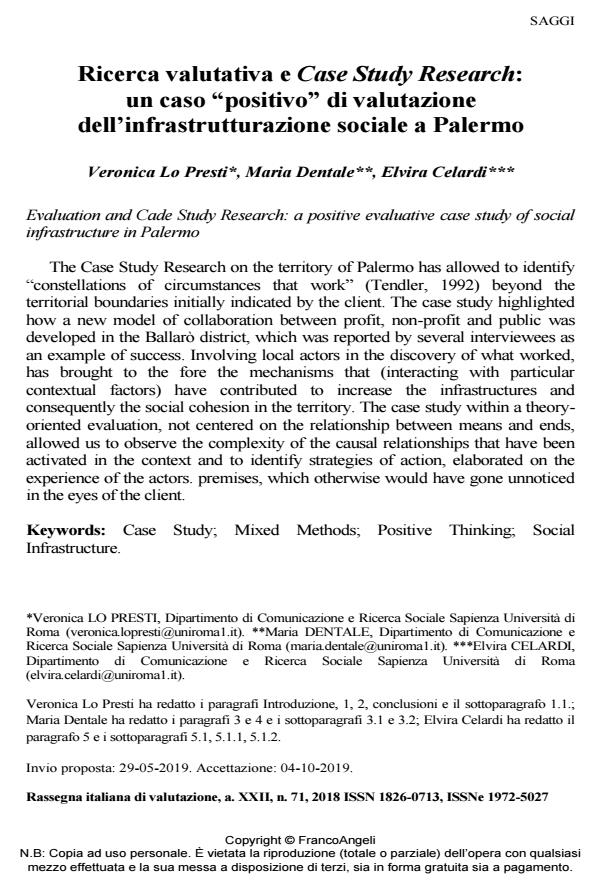Evaluation and Cade Study Research: a positive evaluative case study of social infrastructure in Palermo
Journal title RIV Rassegna Italiana di Valutazione
Author/s Veronica Lo Presti, Maria Dentale, Elvira Celardi
Publishing Year 2019 Issue 2018/71-72
Language Italian Pages 22 P. 9-30 File size 542 KB
DOI 10.3280/RIV2018-071002
DOI is like a bar code for intellectual property: to have more infomation
click here
Below, you can see the article first page
If you want to buy this article in PDF format, you can do it, following the instructions to buy download credits

FrancoAngeli is member of Publishers International Linking Association, Inc (PILA), a not-for-profit association which run the CrossRef service enabling links to and from online scholarly content.
The Case Study Research on the territory of Palermo has allowed to identify "constellations of circumstances that work" (Tendler, 1992) beyond the territorial boundaries initially indicated by the client. The case study highlighted how a new model of collaboration between profit, non-profit and public was developed in the Ballarò district, which was reported by several interviewees as an example of success. Involving local actors in the discovery of what worked, has brought to the fore the mechanisms that (interacting with particular contextual factors) have contributed to increase the infrastructures and consequently the social cohesion in the territory. The case study within a theoryoriented evaluation, not centered on the relationship between means and ends, allowed us to observe the complexity of the causal relationships that have been activated in the context and to identify strategies of action, elaborated on the experience of the actors. premises, which otherwise would have gone unnoticed in the eyes of the client.
Keywords: Case Study; Mixed Methods; Positive Thinking; Social Infrastructure.
- Verso una valutazione COVID-safe e COVID-ready: didattica, famiglia e territorio ai tempi del COVID-19. Il caso della gazzetta olimpica, giornale della scuola e del quartiere. Veronica Lo Presti, Elvira Celardi, in RIV Rassegna Italiana di Valutazione 75/2021 pp.7
DOI: 10.3280/RIV2019-075002
Veronica Lo Presti, Maria Dentale, Elvira Celardi, Ricerca valutativa e Case Study Research: un caso "positivo" di valutazione dell’infrastrutturazione sociale a Palermo in "RIV Rassegna Italiana di Valutazione" 71-72/2018, pp 9-30, DOI: 10.3280/RIV2018-071002